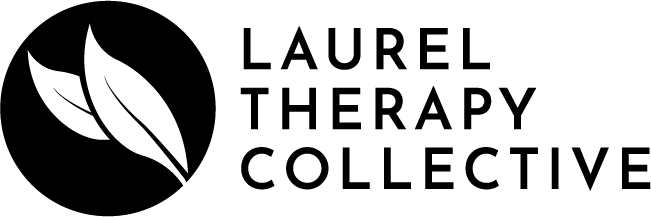Social Justice: Sustainable Activism and Preventing Vicarious Trauma
In a world where hashtags fuel movements and social platforms serve as soapboxes, activism has evolved. From the radical to the domestic, engaging in causes we are passionate about is empowering. But it can come with a hidden cost: vicarious trauma and compassion fatigue. Let's examine social media activism and explore more impactful ways to make a difference while safeguarding your mental health. We'll also explore meaningful alternatives to attending protests and demonstrations.
Traumatizing Yourself Is Not Activism
It's important to understand the intersection of activism and mental health. There can be confusion about what it means to be an activist, particularly for those who consider themselves to be radical. But as trauma therapists, we want to put out a radical idea for your consideration: traumatizing yourself is not activism. Activism is about raising awareness, advocating for change, and taking tangible steps toward a better world. It involves intentional actions, conversations, and initiatives that support to a cause. You can do all those things - radically - without putting yourself at risk for PTSD.
Activism should empower people to be agents of change without compromising their mental health. True activism is not synonymous with personal distress. Activism is a catalyst for collective transformation. We are most able to advocate for transformation from a place of mental wellness.
Vicarious Trauma and Activism
What Is Vicarious Trauma?
Vicarious trauma happens when people are traumatized by the suffering of others. Unlike personal trauma, vicarious trauma stems from exposure to the trauma experienced by others. It's an emotional toll extracted by witnessing or engaging with the suffering of those fighting for justice. And it's quite serious. Vicarious trauma can produce full-blown PTSD. You do not have to experience the trauma directly to be traumatized by it. Vicarious trauma is rampant in activists, first responders, and mental health professionals.
The Weight of Witnessing
Witnessing the struggles of others has become part of activism, especially on social media. As we scroll through timelines flooded with images of suffering and stories of injustice, our empathy connects us to the pain. This continuous exposure, although well-intentioned, can sow the seeds of vicarious trauma. You do not need to engage with traumatic material to feel empathy. You can be an activist and not watch upsetting footage. You don't even need to engage with social media to make impactful change.
The Emotional Fallout: Compassion Fatigue
When we are regularly confronted with heartbreaking images of suffering, it's actually harder to make change. Each shared post, though meant to raise awareness, embeds a piece of that trauma within us. This emotional fallout can manifest as anxiety, depression, PTSD, or hopelessness. Even if we don't develop vicarious trauma, we are likely to experience compassion fatigue.
Compassion Fatigue and Activism
Compassion fatigue often happens to folks in caregiving, healthcare, or helping roles. And of course, it happens to activists. Compassion fatigue goes beyond your typical stress – it's that feeling of losing your sense of purpose and hope. People dealing with compassion fatigue might find it harder to connect and care for others, eventually leading to burnout.
Activism and Burnout
Burnout is extremely common among activists. It's hard to keep energy and morale up when change is slow and incremental. For those of us who see tremendous potential in the world, incremental change feels like an insult to possibility. While the goal is to create a better world, we must be mindful of our emotional boundaries. Without these boundaries, the risk of compassion fatigue and vicarious trauma go way up.
A Critical Look at Social Media Activism
The Scroll of Trauma
Social media offers a global stage for activism. But it's a double-edge sword. The constant barrage of distressing content takes a toll on mental health. The endless scroll inundates us with traumatic images and stories, leading to vicarious trauma. The emotional fallout from exposure to others' suffering immobilizes us rather than galvanizing us to work for change.
Clicktivism vs. Real Impact
Clicking 'share' or adding a hashtag may give the illusion of contribution, but it falls short of meaningful change. The allure of digital activism lies in its simplicity. True impact requires more than virtual gestures. Activism demands real-world action.
The Paradox of Sharing
While social media is a powerful ally in the fight for change, it contributes to vicarious trauma. The ease of sharing and consuming content inundates us with a never-ending stream of distressing narratives. The impact of this constant exposure on mental health cannot be overstated.
The Echo Chamber Effect
Social media platforms are notorious for creating echo chambers. It's common for like-minded people to reinforce each other's perspectives. While this sense of community is valuable, it can also isolate activists from diverse opinions and hinder the growth of a movement. You have to know what you're up against and what perspectives should be considered when thinking of solutions. The echo chamber effect can limit our ability to engage in constructive dialogue.
Nurturing Mental Well-being in Activism
Balancing Digital and Real-world Actions
We have to strive for balance between online engagement and real-world actions. Use online platforms strategically and complement it with concrete action in the real world. Clictivism isn't enough. But you don't have go dramatically outside your comfort zone.
For those committed to social media activism, adopting a mindful approach is the only way to make it sustainable. Set time limits. Curate your algorithm to include uplifting content. Be intentional about the information you consume. This practice helps mitigate the risk of vicarious trauma while still staying informed.
Personalizing Your Activist Approach
Activism is a deeply personal journey. Individuals have to tailor their approach to suit their mental health needs. There's a lot of noise about the "right" way to be an activist. Some take radical positions, others more subdued approaches. Some voices call for demonstration and public protest, while others encourage civic engagement. Instead of conforming to the demands of the loudest voices, choose avenues that align with your strengths.
Beyond Protests: Avenues for Impactful Activism
Many people fall to social media when protests and demonstrations feel overwhelming. This makes sense; being able to engage with a movement from home feels less taxing. But as we know, social media comes with a high risk of vicarious trauma. Here are ways to work for social justice that are a good fit for more introverted or anxious people:
Contacting Representatives
Engaging with elected officials makes sure your voice is directed properly. Write emails, make calls, or attend town halls to ensure your concerns reach those with the power to enact change. This approach transcends the echo chambers of social media and can actually shape policy. It's not likely to happen overnight, and it might be frustration. But change is almost always incremental.
Voting
Need we say more? Voting in local elections and for downballot measures has a more profound impact that most people realize. Just because voting isn't a thrilling experience doesn't mean it doesn't matter.
One-to-One Conversations
Meaningful conversations change minds. Engage in dialogues with friends, family, and colleagues. Share personal stories, listen actively, and find common ground. These individual connections often have a ripple effect.
Community Organizing
Get involved in local community organizations or start one yourself. This grassroots approach allows you to uplift your community, make meaningful connections and tangible change.
Volunteering
Invest your time and skills in local nonprofits or charitable organizations. Whether it's working at a food bank, tutoring, or participating in community clean-up initiatives, volunteering is a hands-on way to contribute to positive change.
Instituting Inclusive Policies
Change starts close to home. Advocate for policies at work, school, or within your community that align with your values. Create safe spaces that promote diversity, equity, and inclusion. Transforming environments fosters lasting change that extends beyond the digital realm. This is especially true if you're in a position of power as a boss, manager, teacher, parent, or business owner.
Donating
Put your money, expertise, and time where your values are. Financial support can be a potent force for change. Contribute to organizations aligned with your cause, ensuring they have the resources needed to make a real impact. Discontinuing contributions to organizations not aligned with your values sends a powerful message.
Writing Editorials
Harness the power of the pen. Craft editorials for local newspapers, sharing your perspectives and advocating for change. Op-eds provide a platform for thought leadership, reaching audiences beyond the confines of social media bubbles. When crafting your editorial, you might find it tempting to post on social media. Keep in mind that some outlets don't want to publish content that has appeared elsewhere.
Educating Children
Shape the future by educating the next generation. Incorporate discussions about social issues into your parenting or teaching. Instill empathy, critical thinking, and a sense of social responsibility in kids, fostering a culture of activism from an early age.
Practicing Self Care
Caring for yourself can be a radical act. When we care for ourselves, we give others permission to the do the same. We restore our energy and replenish our resolve to fight another day. Activism without self-care will be short-lived, and any victories will be pyrrhic. (Pyrrhic victory: a victory that comes at a cost too great to justify.) Taking care of yourself in nonnegotiable.
Self-Care and Activism: A Balancing Act
Recognizing Burnout and Compassion Fatigue
Activism burnout is real. Pay attention to signs of emotional exhaustion, cynicism, and a decreased sense of accomplishment. Recognizing burnout is the first step in mitigating its effects. Fatigue, apathy, cynicism, and detachment are strong indicators of burnout and compassion fatigue.
Setting Boundaries To Prevent Vicarious Trauma and Compassion Fatigue
Establishing clear boundaries is crucial. Limit your exposure to distressing content, schedule designated activism time, and balance it with activities that bring joy and relaxation.
Community Support
Connect with like-minded individuals for support. Share experiences, discuss coping strategies, and celebrate victories together. A strong community provides a safety net during challenging times.
Mental Health Support For Activism With Heart, Impact, And Boundaries
As we personalize our activism, let's remember that the journey should empower, not diminish, our mental well-being. Social media activism, while a powerful tool, should be paired with real-world actions. Through embracing sustainable activism, we can foster change without sacrificing our mental health.
Therapy For Millennials & Gen Z In California & Florida Seeking To Balance Activism With Good Mental Health
If the weight of activism becomes overwhelming, seeking professional help is a sign of strength. Therapists trained in trauma therapy can offer millennials and gen Z guidance tailored to your experiences. You don't have to stop fighting the good fight. But you do need to care for yourself in the process. Otherwise, you won't be able to keep fighting. Schedule a free consultation with our California and Florida online trauma therapists. Take the first step towards balanced engagement and lasting impact.



















